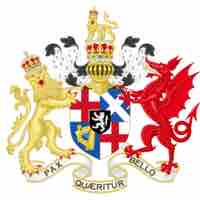Section 3
England and Parliamentary Monarchy
By Boundless
The reign of Elizabeth I was marked by the restoration of the Protestant Church of England and competition with powerful Spain that both fueled a sense of modern English national identity.
Believing that their power is God-given right, James I and his son and successor, Charles I of England, reigned England in the atmosphere of repeated escalating conflicts with the English Parliament.
Charles I's attempt to impose taxes not authorized by Parliament contributed to the ongoing conflict between the King and Parliament and eventually resulted in passing the 1628 Petition of Right.
The escalating conflict between Charles I of England and the English Parliament resulted in the English Civil War, in the aftermath of which monarchy disappeared for over a decade and Oliver Cromwell ruled as Lord Protector of the Commonwealth of England, Scotland, and Ireland.

Despite the revolutionary nature of the government during the Protectorate, Cromwell's regime was marked by an aggressive foreign policy, no drastic reforms at home, and difficult relations with Parliament, which in the end made it increasingly similar to monarchy.
Over a decade after Charles I's 1649 execution and Charles II's 1651 escape to mainland Europe, the Stuarts were restored to the English throne by Royalists in the aftermath of the slow fall of the Protectorate.
The Glorious Revolution was the overthrow of King James II of England by a union of English Parliamentarians with the Dutch stadtholder William of Orange and his wife Mary that resulted in the eventual regulation of the respective powers of Parliament and the Crown in England.